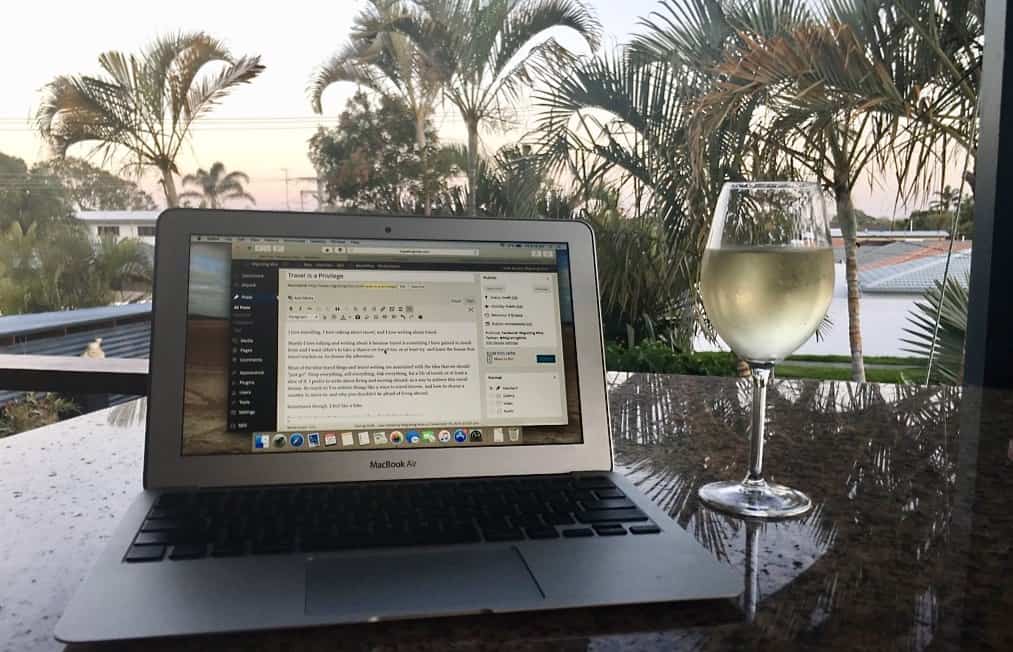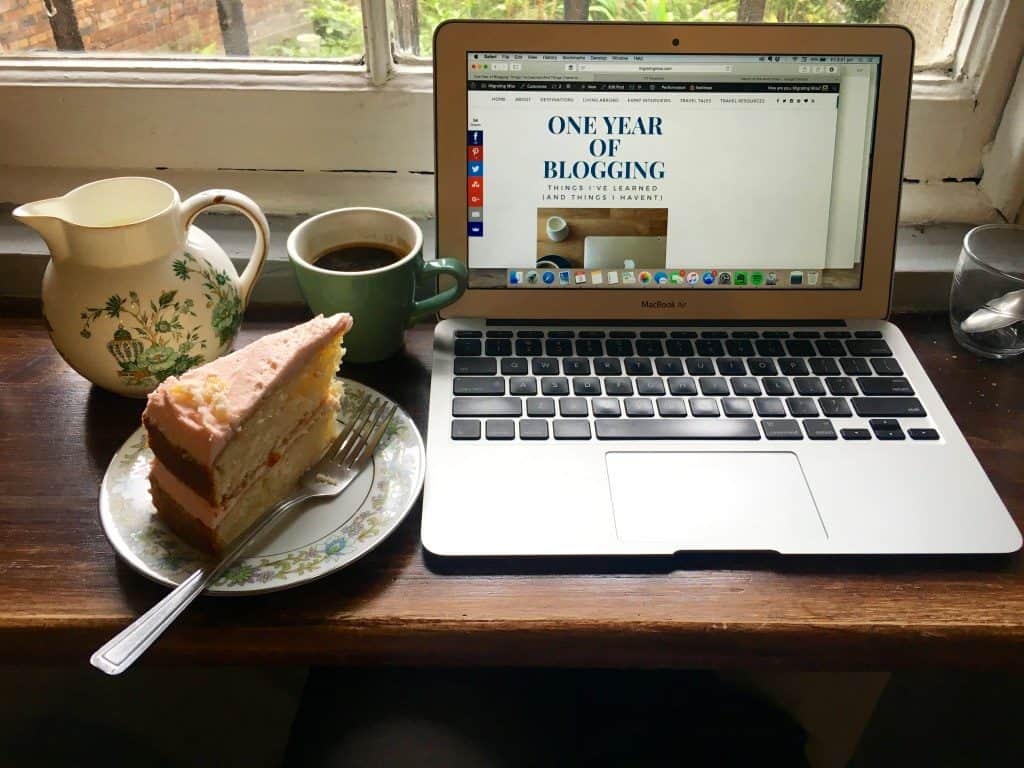This seems to be a basic topic, but figuring out how to write a blog post at the beginning may be trickier than you think. Writing for the web to write a blog may be different from any other writing you had to do before at work or school.
Knowing what a good blog post is and the different types of posts you can write will become second nature after a while, but this is something you need to consider, first of all. This is even before you start drafting, editing, and uploading posts.
Below we outline the things to consider and the best tips for writing blog posts.

What is a good blog post?
What is a good blog post may be subjective, but in general, a good post is interesting and educational, and allows readers to learn something from it. No matter how to do something, why the product is good for them, general information that is useful to them, or something thought-provoking.
Types of blog posts
There are various different types of blog posts, but these are the most common:
- Listicle: A summary list of specific topics. For example, a list of “10 things to do in London” or “10 ways to improve mental health.”
- “How to” guide: guide the reader through a process and provide them with the tools to achieve something. For example, “How to grow herbs in windowsill pots”.
- Personal work: Just like an editorial in a newspaper. Express opinions or share personal experiences. This is not to say that readers will not remove something from the post in terms of a deeper understanding or application of something to their own lives.
- Newsreel: Very self-explanatory!
The first three on the list are often referred to as “evergreen” content. This means that they are still relevant or just need to be updated. The last one is usually a one-off, and the date will not be relevant soon.
Unless you are a news-based blog, you are most likely to target evergreen content, because it means you can keep sharing posts over time, and they will continue to get traffic from search engines (but will be detailed later Introduction).

Plan your post
So now that you know what a good blog post is and the different types you can write, you can start with the plan!
Choose a topic
Ideally, you would choose what you are interested or know about, because these are the easiest types of posts to write. However, this is not absolutely necessary, because of course you can research!
If you have a blog niche (More about this here) Then you should choose something that matches it.
Research topics and keywords
The best blog topics will also have potential traffic from search engines or social media, so your research may actually start from there, rather than from the topic itself.
For social media, your audience or a wider audience will usually be interested in this article. This may be because it is a hot topic or content that is very easy to share. This means that people may see it and want to share it with their friends/family.
Over time, you will think about this better, but in fact, it may also be the last post you want to perform well socially!
We have a Social media guide for bloggers Here you can learn more.
Search engines are more predictable in some ways, although they are not entirely within your control. If you want to know whether a topic is something other people are searching for, or whether you can compete for a position on the first page of Google (most of the traffic comes from), then you need to perform so-called “keyword research” .
This is a complete topic in itself, which we will cover elsewhere, but basically, keywords are phrases people search for. So this may be “the best thing to do in London”. You can use a tool like Keysearch to see how many people search for this keyword each month, and how competitive it is to rank on the first page (note, It is large in quantity, but very competitive).
When you are just starting out, you may not want to invest in keyword tools right away, so there are some other ways to research, which we will cover when writing basic SEO posts. But now, I only know that this is the same thing!
Of course, if you are not familiar with the subject, or you want to ensure that you have comprehensive knowledge and perspectives, then of course you also need to study the subject itself.

Know who you are writing for
Be loyal to your brand and niche market. In your plan, you can consider the role of the person you write about and keep this in mind throughout the process.
Draft your post
The next step is to actually start writing! You may find it comfortable to write your thoughts directly on paper, especially if it is a personal work, but over time, I have been able to speed up my writing and make sure that I cover it by doing the following All content.
Write your structure/subtitle
Blog posts are more intuitive than some other forms of posts. You will notice that subheadings are used throughout the article and short paragraphs instead of large blocks of text.
A blog post should have a title one (your title), and then you can build other main titles as H2, further subtitles as H3, and so on.
Before I start writing anything substantial, I will write down a list of my potential titles and subtitles. These can be adjusted later, but it is best to understand the overall structure of the post. Depending on the topic, I might also make points under each heading of the points to be covered.

fill in
This means I only need to fill in different headings. If I want, I can fill in out of order, which helps me avoid getting stuck at a certain point and unable to move on.
I usually fill in the body of the post before starting and finishing work. You should get your attention in the introduction, but if you are writing for SEO, you should also use your keywords.
Don’t forget to have a conclusion, preferably one that connects your main points and motivates readers through CTA, whether it’s following you socially, signing up for your newsletter, reading more posts on similar topics, selling products , Or just let them do something in their own lives based on what you write.
Try to complete this part of the writing process as quickly as possible. You don’t need to worry about the wording or text, just take out something, because it can be edited later.
Write a job title
My title usually starts with any keyword, and then after I finish writing the post itself, I will start playing around with it to try to make it more interesting! Your headline lets people know what your post is about for the first time.
Try to make it clickable instead of “clickbait”. This is where the title may attract attention but is not completely relevant to the content of the post, or even spread misinformation to get more page views.

Edit your post
The editing process is actually the most important part, not the writing itself. If you want, you can make adjustments here, and even completely rearrange the structure of your posts. I do this often!
- Edit the post at least once
- Run spell check/grammar (powerful editing tool)
- Look for opportunities to insert more keywords. This means that if your keyword is “Edinburgh things to do”, you can also insert “Edinburgh things to do” and “Edinburgh best activities” etc.
- Finalize the title. Ideally, the length of Google search results should not exceed 65 characters.
Upload your post
Now you can really upload posts!
I will not write the post directly into WordPress because it can be moody at times and you may find that you have lost your job. Evernote is my favorite writing tool. I can organize my posts into a notebook that can be used across multiple platforms, and it can save my work anytime, anywhere, without me having to do anything. Google Docs is also a popular choice.
- Upload to WordPress
- Format all headings and add bullets or lists where appropriate
- Adjust the URL to suit your keywords. If you have numbers, please delete them in case you want to update them later. For example, “20 things to do in London” should just be “things to do in London”.
- Use Yoast plug-in to adjust metadata. This is a small snippet that you can see on Google when your post appears. Although Google sometimes chooses its own snippet, it’s best to adjust it just in case and explain more about the post.
- Add images. These can be your own or copyright-free sites such as Pexels or Unsplash. But they should be resized according to your theme, and the file size should be smaller. Be sure to add alternate text to describe the content in the image for accessibility.
- Depending on how you organize your site structure, add posts to categories and/or tags (these should not be an exhaustive list, but rather a small part of the main topics that help determine the category).
- You should create links between posts on your website as much as possible to help guide readers to further reading on your website.

Other things to consider
Here are some final tips for blog post writing that you can consider throughout the process.
- Conversational style usually performs better than an article. Understanding the subject but being approachable is helpful.
- The word count is not all and final, and very dependent on the niche. However, long articles can help rankings because they usually answer more questions that readers may ask and are thorough. But there is no need to scribble!
- Your blog post should be 100% original. Don’t copy and paste anything! !
- In addition to linking within your own website, you should also link to some valuable external resources. Not direct competitors, but competitors who add value to your speech. For example, if a post on another site expands on a topic you do not intend to cover, then you can link to that topic. Google also identifies links to other authoritative websites, which can help search engine optimization.

This is how to write a blog post that people might actually read!View our Blog section Get more posts to help you create your own blog, and sign up for our mailing list to get weekly tips!
Sonia
